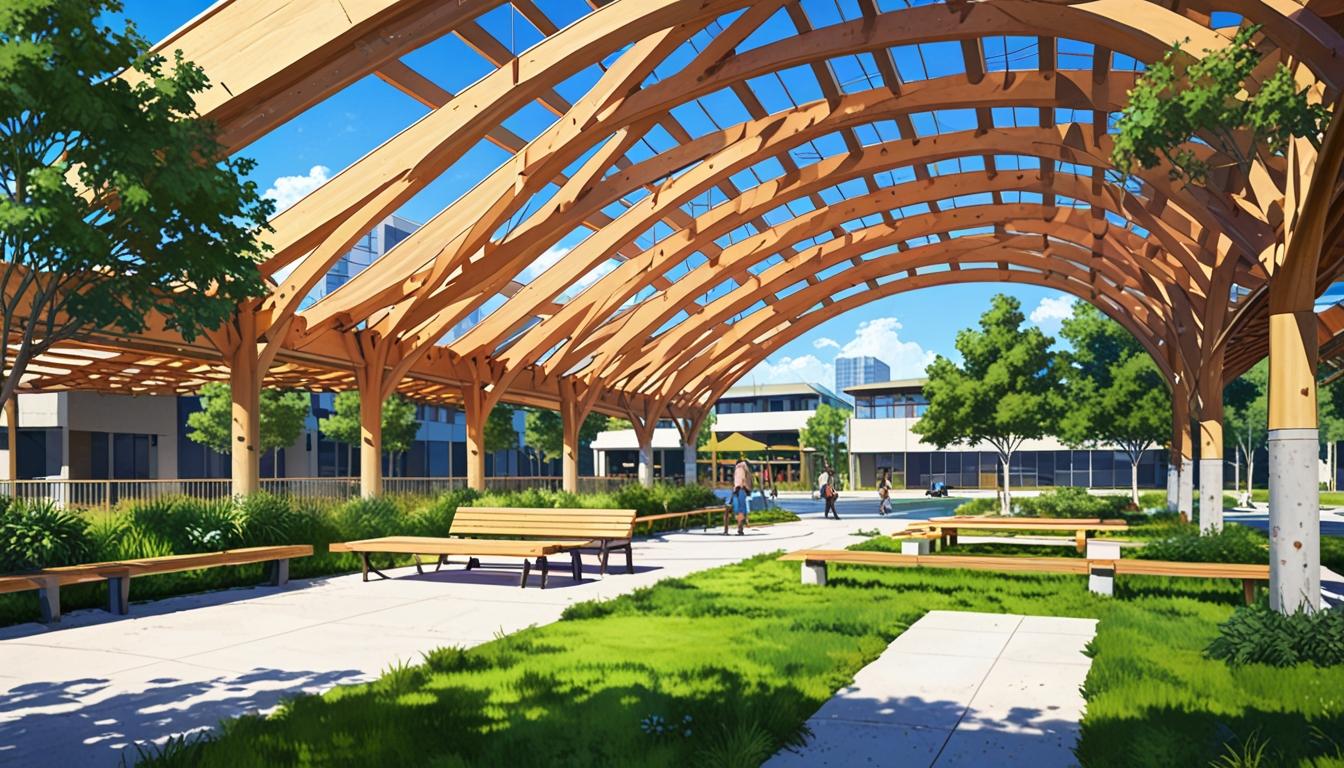In October 2024, Azure Magazine celebrated its 40th anniversary with the Human/Nature conference, featuring global experts and projects that showcase innovative design solutions aimed at addressing climate change, urban renewal, and ecological stewardship.
In October 2024, Azure Magazine hosted its inaugural Human/Nature conference, a two-day multidisciplinary event focused on the interface between design and climate change. Marking the magazine’s 40th anniversary, the conference showcased a breadth of international speakers and projects that highlight innovative approaches to sustainability and urban development. The event aimed to explore how design can contribute to climate resilience and ecological regeneration.
One notable speaker was Pat Hanson, founder of the Toronto-based architecture firm Gh3*. Hanson shared insights on her firm’s work in public infrastructure, including the “Real Time Control Building #3” in Edmonton—a facility dedicated to managing dynamic urban water systems. This project exemplifies how infrastructure can transcend its utilitarian purpose to become an inspiring element of the urban fabric. Hanson’s portfolio includes several award-winning park pavilions in Edmonton and Toronto, demonstrating her belief that public amenities should also possess architectural beauty. Hanson was part of a panel dedicated to “heroic” public infrastructure.
Representing Copenhagen’s 3XN architectural practice, partner Susan Carruth presented the Sydney Fish Market, a project nearing completion that is poised to influence the revitalization of Blackwattle Bay. The 80,000-square-meter structure is designed as a multifunctional venue combining a working fish market with a cultural and culinary destination. Its most striking feature is a large timber and aluminum roof resembling traditional market stalls, which plays a key role in the building’s sustainability strategy by reusing rainwater, providing shade, and filtering hot air from prevailing winds. The project embodies a people-centered approach to architecture and sustainability.
The conference also highlighted an ambitious urban redevelopment initiative in Toronto—the Downsview Framework Plan. Following the closure of Downsview Airport, the 210-hectare site is being transformed into a pedestrian-friendly, transit-oriented “15-minute city” with extensive greenery. Spearheaded by developer Northcrest and involving prominent firms including Henning Larsen, SLA, and KPMB, the plan envisions about 50,000 homes and over one million square meters of commercial space. This vision seeks to challenge the traditional challenges posed by aviation infrastructure and reimagine the urban landscape for inclusivity and ecological harmony. The Downsview plan was the subject of the conference’s most-attended workshop.
Another significant discussion centered on Indigenous-led urban development efforts in Vancouver’s Jericho Lands mega-project. Dennis Thomas-Whonoak, elected Councillor of the Tsleil-Waututh Nation and co-founder of Kwasen Enterprises, detailed the collaborative design process involving the Tsleil-Waututh, Musqueam, and Squamish Nations. The project includes 13,000 new homes, with 30 percent designated as affordable housing, along with over eight hectares of parkland. Central to the design is respect for the land’s topography, especially Watchmen’s Hill, a site of historical and cultural importance to local Indigenous peoples. Thomas-Whonoak emphasized the shift in stewardship with the statement, “You’ve had 150 years. It’s our turn now,” reflecting a commitment to shared values grounded in Indigenous ways of knowing, which are intended to resonate universally.
Sustainability and circularity in manufacturing were also focal points, with attention given to innovative approaches such as those by Cicil, a North Carolina–based studio producing handmade rugs with natural, upcycled fibers like wool and deadstock jute collected directly from farming cooperatives. Their work exemplifies how circular manufacturing can minimize waste while delivering artisanal quality. Additionally, the Catifa Carta chair by Arper was showcased as a model of design circularity. Made from PaperShell—a 100 percent bio-based paper pulp—the chair is fully recyclable, and at the end of its lifecycle, the material can be converted to biochar for soil enrichment and forest regeneration.
Looking forward, Azure Magazine announced the return of its Human/Nature conference for 2025, scheduled for October 29 and 30, promising continued exploration of the vital nexus between design innovation and environmental stewardship. The conference provided a platform for groundbreaking ideas and projects that blend aesthetics, community needs, and ecological responsibility.
Source: Noah Wire Services




